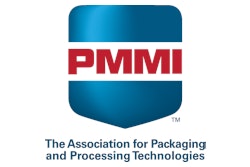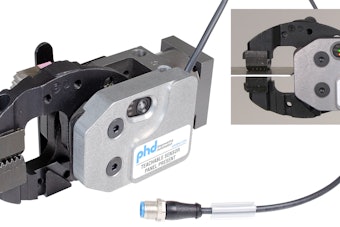Quick hits:
- The high upfront cost of many Industry 4.0-ready packaging machinery investments has made retrofitting a popular alternative.
- Many larger Industry 4.0 initiatives begin with retrofits, with simple additions to existing machines, like monitors and sensors to collect actionable IoT data without buying a whole new packaging machine.
- Despite their potential benefits, not all retrofits are ideal. Sometimes the benefits of a whole new, IoT-ready packaging system or piece of equipment, are preferred.
 | Read the transcript below: |
Hello and welcome to Take Five with Automation World. I'm David Miller, Senior Technical Writer for Automation World.
Today, I want to talk about retrofits -- and, more specifically, when it is and isn't a good idea to choose to engage in a retrofit. So, first and foremost, I want to clarify what I mean when I say retrofit -- What I'm referring to is the upgrading of old equipment with new intelligent sensors or other more advanced components in order to imbue them with improved functionality that you might otherwise have to purchase a new machine to realize.
Now, retrofits have become increasingly common in recent years, and this is for a few reasons. First of all, one of the main reasons that Industry 4.0 investments often aren't made is because of the high upfront costs they involve, and their slow return on investment. Of course that's only when done wholesale – that is, by replacing entire pieces of machinery all at once. By contrast, a retrofit can allow end users to make small, inexpensive upgrades to pre-existing equipment that allow them dip their toe in the pool, get familiar with the technology, and receive small returns much faster. And often times, through this process of incremental automation, what begins with retrofitting will evolve into a bigger transformation.
All of this said, it's not always entirely clear when a retrofit is appropriate, and, if it is, what type of retrofit should be pursued. So, on this topic, every expert I've ever spoken to has told me that it's a matter of selecting a specific, narrow goal – a place you want to go – and assessing where you are now, and what information you need to get there. Then, you can conduct a cost-benefit analysis and decide if a retrofit is the best pathway forward.
So, one example of a situation where a retrofit might not be a good idea. Imagine a glass manufacturer that is looking to measure the amount of materials being processed to improve throughput, and by extension, their bottomline. Retrofitting machinery with sensors to track this might seem like a no-brainer. However, if on closer examination one were to find that a much easier way to improve their bottom line would be to simply monitor environmental conditions, then this would not be a good retrofit. That's because it's a matter of opportunity cost: While doing it might save money, doing something else would save more.
Another example of a situation wherein a retrofit would be unwieldly or difficult is one where there are technological barriers. For example, if you had an older machine running on a proprietary system and wanted to pull data out of it. Many of these older machines can only display data through their onboard HMIs. To change that, you would need to build a custom connector and interface, which, while possible, might be more trouble than it's worth. Once again, we see that a careful cost-benefit analysis is required.
But what about a retrofit that WOULD be a good idea? First of all, as previously mentioned, any retrofit in which new sensors are addended to a machine could potentially be useful, so long as it is found to be advantageous in the net after that cost-benefit analysis is performed. But there are actually some other good examples that pertain to cybersecurity.
One common cybersecurity retrofit is attaching a common industrial protocol or CIP security proxy to a device. So just to provide a little bit of background, CIP security is just a system that verifies communication between devices on a network by requesting a special security certificate that must be embedded into the device by the vendor, making it nearly impossible to spoof. The problem is, of course, that many older devices may not have these certificates embedded in their firmware, since they were sold at a time when cybersecurity was not the same concern it is now. These proxies can be attached to those older devices, and can provide them with that security certificate.
This is of course a unique example because there might not be any other way to achieve this outside of buying new equipment without this retrofit.
So, anyway, that's about all I have for you today, but if you enjoyed this video please do keep your eyes on this space for more to come in the days ahead.



















